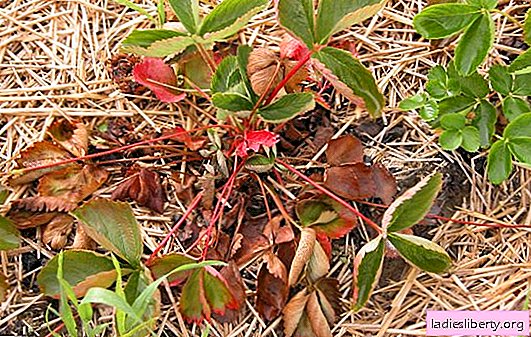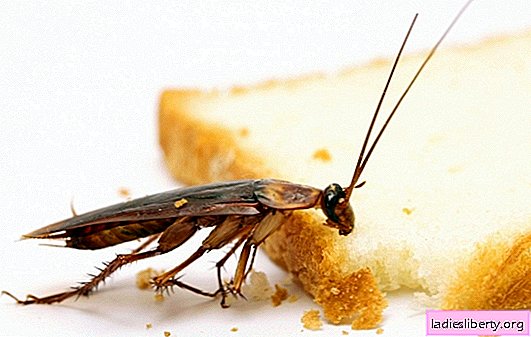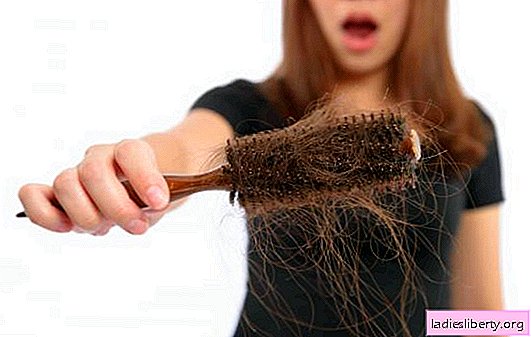
Which of us does not like strawberries or garden strawberries.
This berry, ripening in May-June, is unusually tasty and healthy. It is tasty fresh, excellent in preparations, preserves, compotes, jams, for freezing.
In order to get a good strawberry crop, you need to properly plant and care for it. Often, with poor care, strawberries deteriorate, become sick and do not yield. Why strawberries dry, how they are sick and why, how to prevent this, you can find out by reading this article.
Planting and Strawberry Care
In order to feast on excellent berries, you need to properly care for the plants. Care begins with a proper fit.
First rule - competently choose a site. Mostly suitable for strawberries are slightly acidic soils, sandy loamy or loamy soils, the surface should be flat and the area well lit and protected from winds. Plant it both in the fall, and in the spring. On clay soils make compost or peat, add sand, dig. If the soil is acidic, it is lime.
In preparation for planting, weeds and roots are removed. . It is possible to plant strawberries on open ground, as well as under film or geotextiles, so that it covers the main area of the bed. This will help to maintain moisture under the plants and prevent the weeds from growing, moreover, picking berries is easier.
Second rule - the choice of good seedlings. She must be healthy and of high quality. It is better to take seedlings in nurseries or from those who grow it properly.
Strawberries can be propagated both with the help of seeds, and with the help of mustaches and seedlings. If planted in spring, then young seedlings are taken, if in autumn - then the mustache of the current year is possible, then next year they will bloom and give berries. The roots of seedlings are treated with fungicides and insecticides before planting.
Why does strawberry dry? We are wondering. And these are fungal diseases. Treatment with root fungicides before planting is an important preventive measure.
Bushes do not plant deep, the outlet should be at ground level.
Between the plants should be 20 cm.
Between rows of 40 cm. Planted in very wet soil, "in the mud."
Young plants need watering: if planted in the summer, watered daily, until the seedlings take root. And, further, according to need, preventing drying of the soil.
If the soil was fertilized before planting, then in the first year of life, plants do not need to be fed. If not, then make a composition of 15 g of ammonium nitrate, 30 g of superphosphate and 10 g of potassium salt per 1 square meter. The soil is loosened and weeds are removed.
Such care for strawberries will help to avoid drying the strawberries as much as possible.
So why does strawberry dry: pests and diseases
The leaves curl, turn yellow and dry, and the berries become small and fall off the ovaries. In order to decide what is the reason for the drying of strawberries, you need to examine it.
Moles or a bear can damage plants. They gnaw roots and even push bushes out of the soil.
Drying of the leaves is facilitated by the fungal diseases of strawberries: spotting, powdery mildew, verticillous wilting, gray and late blight rot, anthracnose.
If when inspecting strawberry ridges several affected plants are found, then they should be torn out and burned. When the lesion is massive, it is worth treating with fungicides. Best if preventive spraying is carried out. In the early spring, fallen leaves should be burned and frozen plants should be removed.
Consider strawberry diseases and methods of dealing with them.
• Spotting. Why does strawberry dry - you wonder. And she, perhaps, is struck by a brown spot. This is a fungal disease, as a result of which the leaves die off, the plants weaken and the yield decreases. It is expressed externally in the form of brown spots that appear on leaves, mustaches. They increase in size and contribute to the death of leaves in the form of necrotic tissue. The fungus winters well on leaves and causes new infections in spring. For prevention, you should spray the beds with strawberries Ordan in the autumn. In the spring you can apply Falcon, Quadris, Ridomil, Metaxil. Also, after collecting berries, the bushes are not sprayed for the first year of life.
• Powdery mildew. A sign of it is the defeat of leaf blades, mustaches, berries. It begins on the underside of the leaves. It is a white coating. Affected leaves stop growing, coarsen and curl. The mustache also curls. Then the tissue dies. Flowers during this period are incorrectly pollinated, and the berries become ugly underdeveloped and with a mushroom aftertaste and smell. Powdery mildew develops in warm, humid air. For prophylaxis, plants are treated during the period of leaf growth using Quadrice. And if the disease has already manifested itself, then after the harvest - Fundazol, Switch.

• Verticillin wilt can kill about 50% of landings in the second, third years from the onset of the disease. This fungus affects the vascular system of plants, roots and rosettes. Leaves lie on the bushes. From the central part, deformed leaves of a reddish-yellow color peek out. If you look at a section of the affected root, you can see the vessels of brown color. Then they can hit both leaves and mustache. Prevention is proper care and the selection of quality healthy planting material. When developing, they fight it by spraying with the help of the preparations Fundazol, Benorat or sprinkling with them. When identifying a disease at an early stage, and also, as a prophylaxis, trichoderma is used.
• Gray rot can destroy up to 60% of berries. It develops well in areas of very thickened and unventilated, when grown for a long time in one place. The whole aerial part of the plants is affected. It is most manifested on berries, with the appearance of foci of decay with spores. On the leaves visible dark gray or brown spots. For prevention, high-quality seedlings, high ridges, spraying with Euparen, Switch, Topsin M or Derozal are used. In rainy weather, spray again after flowering. Affected berries should be removed, as spores spread very quickly.
• Phytophthora - The scourge of most garden crops, including wild strawberries. It can affect the roots and the aerial part. Especially in humid warm weather. Pathogens mushrooms. Brown-gray spots appear on the plants, bordered by mold or bloom. Bushes die off with the spread of the disease. Control measures include proper care, quality seedlings, treatment with Ridomil, Metaxil, Quadris.

• Anthracnose. The causative agent hibernates mainly on infected shoots. The disease develops especially rapidly in those years when humidity is high in autumn and spring. Leaves and stems are covered with small gray-purple spots, the stems are ulcerated, and shoots eventually die. In order to prevent the use of landing on high ridges, with healthy seedlings. If a disease is detected - spraying with Antracol, Metaxil, Quadris.

Strawberries and pests are affected: nematode, strawberry mite, weevil, slugs.
Fighting them is an important step in getting a good harvest. To get rid of all these pests, you can conduct a comprehensive treatment.
At the end of September they take a bucket of water, add 2 tbsp. tablespoons of ash, burnt vegetable oil, liquid soap, vinegar and plants are sprayed with this composition. Colloidal sulfur or kalbofos are also used in early spring.











